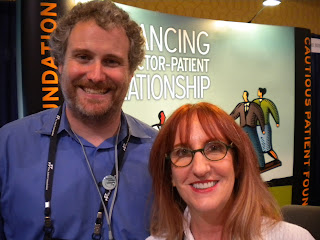#IHI I'm taking these notes as Jennie Chin Hansen, President of the American Geriatrics Society, leads a session at the IHI Annual National Forum on PACE, the Program for All-Inclusive Care, a comprehensive capitated program for "dual-eligible" Medicare/Medicaid patients.
The focus of this program is in on frail, disabled, complex elderly patients. There is a comprehensive offering of services on different sites (e.g., recreational therapy, nursing, physical therapy, meals, nutritional counseling, home health care, psychiatric care, social work, prescription drugs, social services, audiology, dentistry, podiatry, speech therapy, optometry, respite care.) As you can see, this relies on an interdisciplinary team, and they and the services follows the person on a 24x7 basis.
The first center was founded by a social worker and dentist in 1973. The concept spread, with the aim of spending equal or less than was being spent in nursing home facilities. In the early 1980s, the people doing this demonstrated a savings of 5% and were able to negotiate a dual-eligible contract with the state and federal governments, based on administrative waivers of the rules. Later, in 1997, there was bipartisan Congressional support to make the program permanent. (Hard to imagine today: It was a 13-0 vote in the Commerce Committee!) It took nine years, though, for the full rule-making process to be finished.
The program honors what frail elders want: To stay in familiar surroundings, to maintain autonomy, and to maintain a maximum level of physical, social, and cognitive function.
The components of the population (average age of 80) indicate the following complexity -- frailty, co-morbidity (six or seven conditions, on average), mobility impairment and disability cognitive impairment. Given this mix, there is an important focus on activities of daily living (ADL). Also, a goal is to avoid acute care episodes, in part to avoid hospital-acquired disability, as well as to avoid the cost of that type of care.
PACE eligibly: Age 55+; nursing home certified; PACE service area; Able to live safely in the community; must enroll all eligible applicants; 95% dually eligible.
Mean age is 80; 75% women; ADL deficits 3.5; 63% have cognitive impairment; average life expectancy in the program is 4.5 years.
PACE is small in scale. Nationally, there are only 23,000 participants served by 80 organizations in 23 states. There are 100-2000 participants per program.
A final and interesting note: The van drivers are the first line of information about the patients, as they can get see early warnings of problems.







































